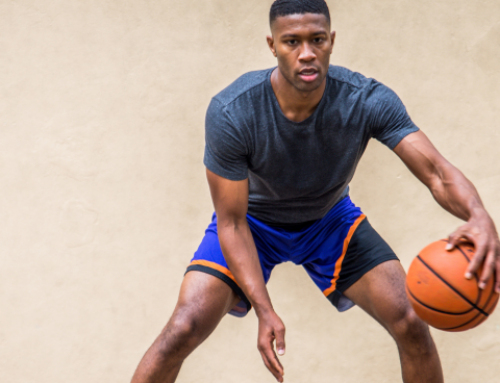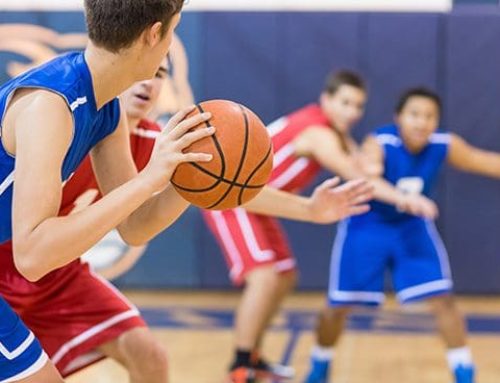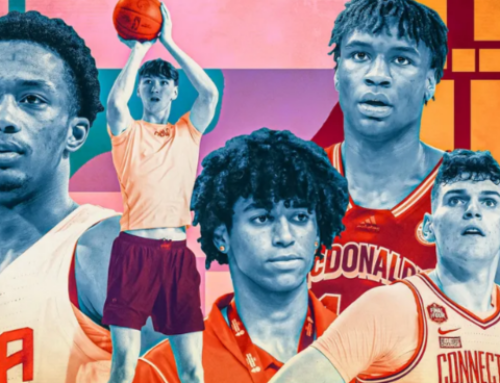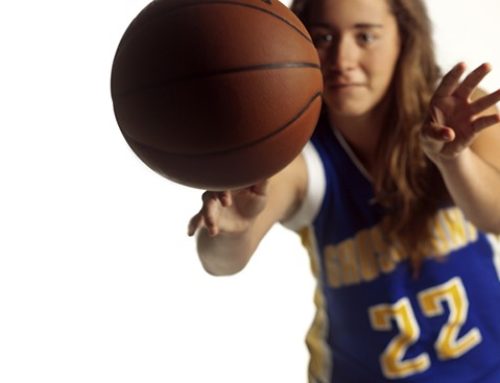The Fitness-Tracking Technology NBA Players Have Been Trying to Sneak on the Court

When you take the time to really look closely, it’s amazing the NBA didn’t notice it the moment Matthew Dellavedova stepped onto the court. Wrapped around his left wrist, the jet black contraption closely resembled one of those oversized watches you buy to attract attention rather than tell time. Yet there it rested, just above the shooting sleeve Dellavedova has worn for much of his NBA career, hiding in plain sight for 15 games before someone in the NBA’s front office was alerted.
The contraption is called Whoop, the product of a fitness tech startup spawned from Harvard’s Innovation Lab, a place that “fosters innovation and entrepreneurship across Harvard,” according to its website. The Whoop is a fitness tracker, similar to gobs of them that are already on market, like the Fitbit and the Jawbone. What separates Whoop from those and other general fitness products is its ability to track data that has previously gone untracked.
Whoop can measure the continuous heart rate of an athlete, which in turn gives it the ability to track heart rate variability, a metric that analyzes “the tiniest variations in time between beats of [a] resting heart rate, providing detailed insights into the complex relationship of stresses on the body, cardiovascular health and recovery,” according to a recent Whoop press release. Whoop can also measure an athlete’s skin conductivity, such as how much sweat he or she loses during physical activity, and ambient temperature, which combines “observation of the environment in which an athlete is active with other sensor data to better understand his or her body’s response.”
All these variables are measured over 100 times per second, and the resulting data allows coaches and trainers to gain insight into whether an athlete has fully recovered from a previous day’s workout, or if limiting the athlete’s playing time that night would be beneficial. The decisions come in accordance with amount of strain the athlete put on himself while engaged in physical activity. The athlete is given a literal “recovery score,” represented by either a green, “go-ahead” or a red “no-go” on the accompanying app.

In a recent Kia commercial, a Whoop fitness band appears on LeBron James’s right wrist.
That’s all well and good, but the NBA doesn’t yet allow wearable tech during games. Practice and training sessions are OK, but once Adam Silver and company noticed Delly’s new gadget, he was asked to stop wearing it during games. Dellavedova’s teammate, LeBron James, is an avid Whoop user, as is his personal trainer, Mike Mancias, who serves as an advisor to the company. Outside the NBA, Michael Phelps uses Whoop, and it has become a major player in most major collegiate sports conferences like the SEC and Big 12.
According to ESPN, Whoop’s in-game ban in the NBA could soon be lifted. A recent report by Tom Haberstroh states that representatives of the players union is meeting with Whoop on Tuesday to further understand its capabilities and benefits for players. Still, an agreement between the union and the NBA will be needed to officially approve in-game use, and that could still be somewhat far off.
Regardless, Whoop’s capabilities make it one of the most advanced pieces of technology for elite athlete, and its use among players in the NBA and elsewhere will almost certainly increase. No matter how long it takes, it feels like wearable technology in-game is inevitable.
RECOMMENDED FOR YOU
MOST POPULAR
The Fitness-Tracking Technology NBA Players Have Been Trying to Sneak on the Court

When you take the time to really look closely, it’s amazing the NBA didn’t notice it the moment Matthew Dellavedova stepped onto the court. Wrapped around his left wrist, the jet black contraption closely resembled one of those oversized watches you buy to attract attention rather than tell time. Yet there it rested, just above the shooting sleeve Dellavedova has worn for much of his NBA career, hiding in plain sight for 15 games before someone in the NBA’s front office was alerted.
The contraption is called Whoop, the product of a fitness tech startup spawned from Harvard’s Innovation Lab, a place that “fosters innovation and entrepreneurship across Harvard,” according to its website. The Whoop is a fitness tracker, similar to gobs of them that are already on market, like the Fitbit and the Jawbone. What separates Whoop from those and other general fitness products is its ability to track data that has previously gone untracked.
Whoop can measure the continuous heart rate of an athlete, which in turn gives it the ability to track heart rate variability, a metric that analyzes “the tiniest variations in time between beats of [a] resting heart rate, providing detailed insights into the complex relationship of stresses on the body, cardiovascular health and recovery,” according to a recent Whoop press release. Whoop can also measure an athlete’s skin conductivity, such as how much sweat he or she loses during physical activity, and ambient temperature, which combines “observation of the environment in which an athlete is active with other sensor data to better understand his or her body’s response.”
All these variables are measured over 100 times per second, and the resulting data allows coaches and trainers to gain insight into whether an athlete has fully recovered from a previous day’s workout, or if limiting the athlete’s playing time that night would be beneficial. The decisions come in accordance with amount of strain the athlete put on himself while engaged in physical activity. The athlete is given a literal “recovery score,” represented by either a green, “go-ahead” or a red “no-go” on the accompanying app.

In a recent Kia commercial, a Whoop fitness band appears on LeBron James’s right wrist.
That’s all well and good, but the NBA doesn’t yet allow wearable tech during games. Practice and training sessions are OK, but once Adam Silver and company noticed Delly’s new gadget, he was asked to stop wearing it during games. Dellavedova’s teammate, LeBron James, is an avid Whoop user, as is his personal trainer, Mike Mancias, who serves as an advisor to the company. Outside the NBA, Michael Phelps uses Whoop, and it has become a major player in most major collegiate sports conferences like the SEC and Big 12.
According to ESPN, Whoop’s in-game ban in the NBA could soon be lifted. A recent report by Tom Haberstroh states that representatives of the players union is meeting with Whoop on Tuesday to further understand its capabilities and benefits for players. Still, an agreement between the union and the NBA will be needed to officially approve in-game use, and that could still be somewhat far off.
Regardless, Whoop’s capabilities make it one of the most advanced pieces of technology for elite athlete, and its use among players in the NBA and elsewhere will almost certainly increase. No matter how long it takes, it feels like wearable technology in-game is inevitable.











